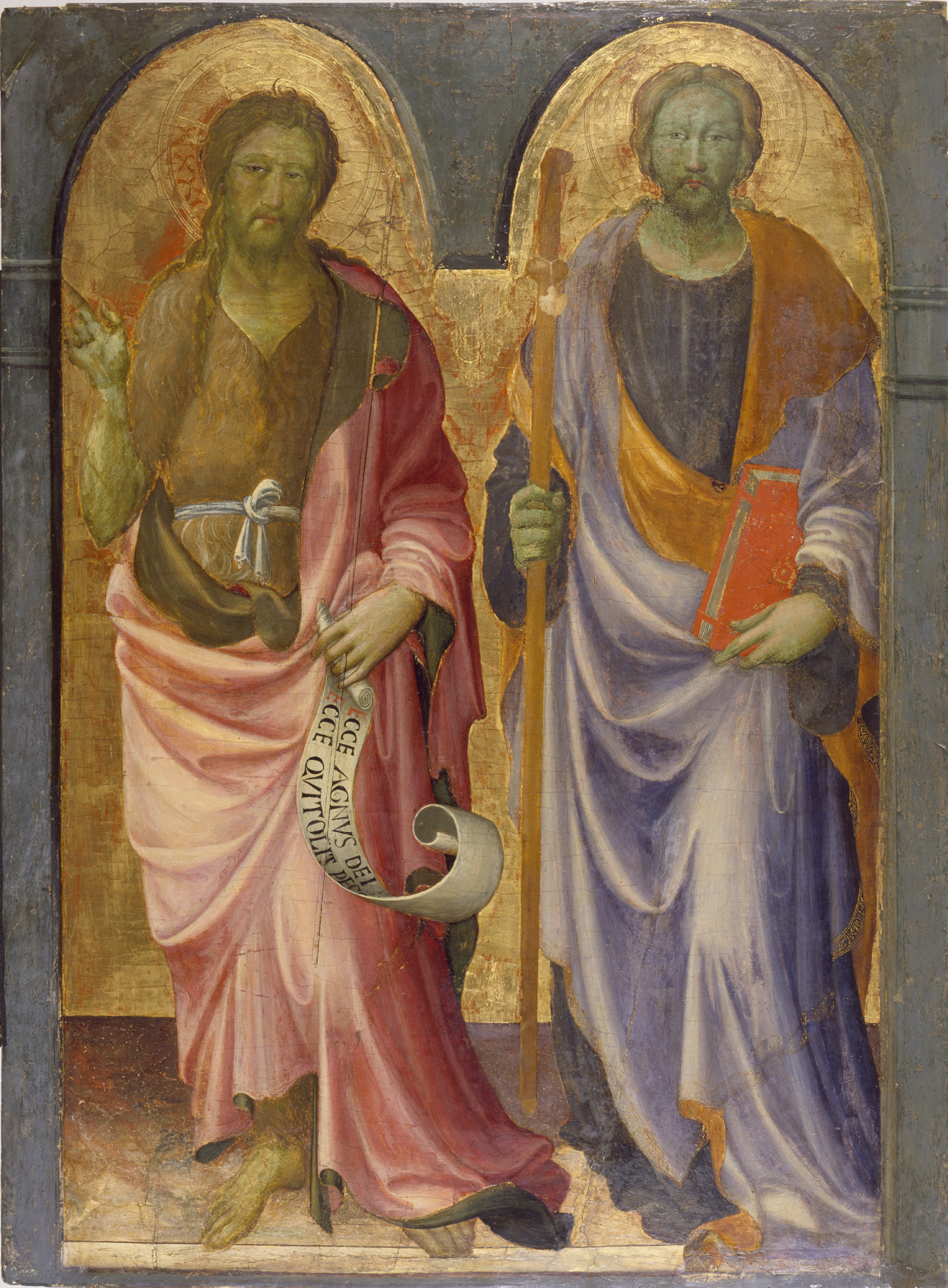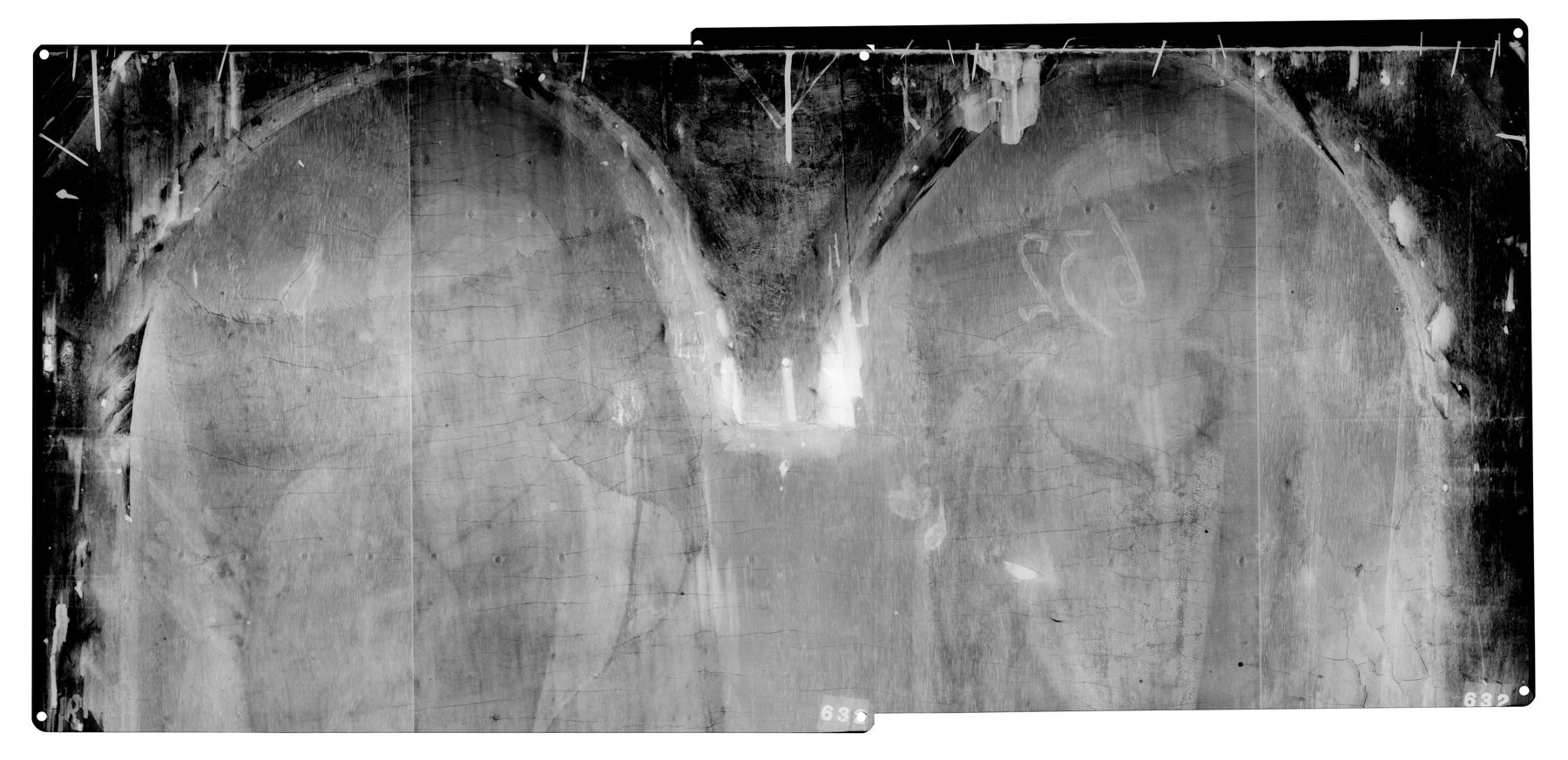Saint John the Baptist and Saint James the Great
(Renaissance Europe )
This painting shows Saints John the Baptist (left) and James the Great (right). John wears his typical camel skin shirt and holds a scroll reading “Behold the Lamb of God,” (in Latin, “Ecce Agnus Dei”), the phrase he famously used to present his cousin, Jesus Christ, to the public. James holds a book and a pilgrim’s staff, the latter alluding to Santiago de Compostella, the famous pilgrimage destination dedicated to him in Spain. The figures are depicted in elegant, swaying poses and dressed in bright, jewel-toned robes. These traits typical of the style known as “International Gothic,” a decorative and cosmopolitan style popular throughout Europe in the late 1300s and early 1400s. Giovanni Toscani was one of its major practitioners in Florence.
The painting is the largest surviving fragment of a multi-paneled altarpiece commissioned in 1423 by the Ardinghelli, one of the wealthiest families in Renaissance Florence. Intended for their burial chapel in their neighborhood church of Santa Trinita, the altarpiece was unusual in that its central section was not a painting but a niche containing a relic believed to be part of the “True Cross” (the cross on which Christ was crucified). The Walters’ panel was originally the right wing of the altarpiece, so that John the Baptist, Florence’s patron saint, was pointing to the relic. The left wing of the altarpiece, now lost, depicted Saints Francis and Nicholas. The altarpiece also included three “pinnacles,” or crowning elements, depicting the Archangel Gabriel, the Virgin Annunciate (both in a private collection, Rome), and the Crucifixion (now in the Accademia, Florence), as well as a “predella,” or illustrated base, depicting scenes from the lives of the holy figures represented above. The predella panel originally placed beneath the Walters’ panel is now at the Philadelphia Museum of Art.
Inscription
Provenance
Provenance (from the French provenir, 'to come from/forth') is the chronology of the ownership, custody, or location of a historical object.
Commissioned by Niccolò Ardinghelli for his family's burial chapel in the church of Santa Trinita, Florence, in 1423. Don Marcello Massarenti Collection, Rome [date and mode of acquisition unknown] [1881 catalogue: no. 25; 1897 catalogue: no. 44, as Andrea Orcagna]; Henry Walters, Baltimore, 1902, by purchase; Walters Art Museum, 1931, by bequest.
Conservation
| Date | Description | Narrative |
|---|---|---|
| Examination | examined for condition | |
| 2/1/1946 | Treatment | cradle removed; inpainted; varnish removed or reduced |
| 2/14/1977 | Treatment | repaired |
| 2/14/1977 | Treatment | examined for condition; inpainted; repaired; splits mended |
Geographies
Italy, Florence (Place of Origin)
Measurements
Painted surface H: 40 3/16 x W: 29 15/16 x Approx. D: 1 1/2 in. (102 x 76 x 3.8 cm)
Credit Line
Acquired by Henry Walters with the Massarenti Collection, 1902
Location in Museum
Not on view
Accession Number
In libraries, galleries, museums, and archives, an accession number is a unique identifier assigned to each object in the collection.
In libraries, galleries, museums, and archives, an accession number is a unique identifier assigned to each object in the collection.
37.632




